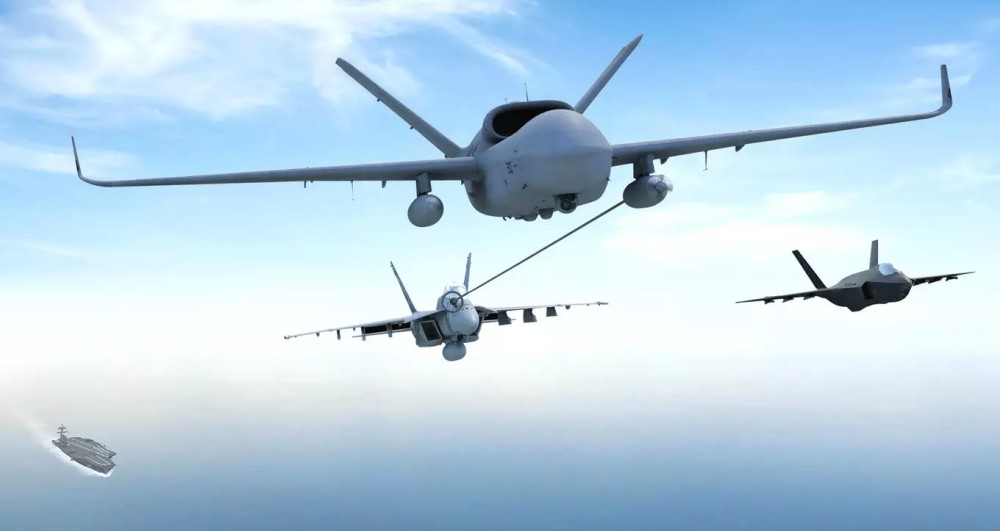The four companies competing to build the U.S. Navy’s MQ-25 Stingray aircraft carrier-based drone tanker gotten the final request for proposals from the service, though the exact specifics have yet to become public. At the same time, General Atomics has become the first of the firms to show both concept art and models of its complete entry, which the company says will be more than just a flying gas station.
In an interview in the September 2017 issue of Proceedings, USNI’s official magazine, Vice Admiral Mike Shoemaker, the Commander, Naval Air Forces, said that the final MQ-25 would be able to carry approximately 2,200 gallons, or nearly 15,000 pounds, of fuel out to a distance of 500 miles from a carrier.
“The MQ-25 will give us the ability to extend the air wing out probably 300 or 400 miles beyond where we typically go,” he explained.
General Atomics is now the first company to show off a full concept for the new tanking-focused MQ-25 and their aircraft bears significant similarities to its Sea Avenger concept. The firm’s Stingray design has notably fewer low-observable or stealthy features and a thicker central fuselage. It also appears to have a new, less complex wing design with winglets and less overall sweep, but otherwise it has the same basic configuration with the engine intake on top and a v-tail.
Terry Kraft, a retired U.S. Navy Rear Admiral who is now Vice President of General Atomics Aeronautical Systems, told USNI News that the revised drone has an electro-optical sensor turret under the nose, just like the company’s existing Predators, Reapers, and Avengers, as well as a full retractable landing gear similar in basic arrangement to that of the Navy’s now retired S-3 Viking carrier based anti-submarine warfare aircraft.
Most notably, General Atomics has reportedly added in a system that allows deck crews to direct the drone automatically using standard hand signals. Kraft did not explain how this system worked, but it would undoubtedly involve one or more cameras in the aircraft’s turret or otherwise placed around its fuselage along with a computer brain and specialized software to detect and translate a person’s motions into specific actions.
That the overall design of the General Atomics submission is similar to the carrier-capable Sea Avenger concept isn’t particularly surprising. The earlier proposal was an under-appreciated UCLASS contender and had many features that made it relatively easy to to convert from a strike and reconnaissance platform into a tanker.
The Sea Avenger was already likely the cheapest of the UCLASS proposals and the revised Stingray derivative only appears to be a less complex design at base. Thanks to the work on that program and nearly a decade of work on the Avenger, much of the underlying technology is probably fairly mature, too, which would only help drive costs further down. All of the features made Sea Avenger a dark horse contender at the time could combine to turn General Atomics’ bid into an easy favorite to become the MQ-25.
The company’s concept art only shows a single Cobham buddy store – a known Navy requirement – under one wing and a standard drop tank under the other, but there’s no reason why the new design couldn’t accommodate additional plumbed pylons, just like the Sea Avenger, for even more fuel, making it an even more attractive option.
The wider main fuselage offers immediate space for other mission packages if required in the future. The Navy might already be in the process of realizing it was passing up the possibility to get a much more significant capability out of the MQ-25 by focusing almost exclusively on tanking.
“You can see a future for weaponization, you could see a future for ISR [intelligence, surveillance, and reconnaissance] capability,” General Atomics’ Kraft noted to USNI News. “The Navy has already asked us to put hooks in there for a radar and I think it’s very logical that the first spiral would be some type of radar installation.”
Source: The Drive

